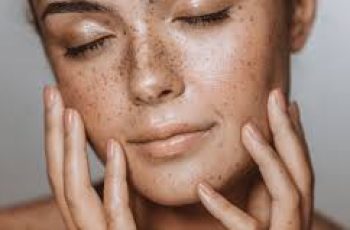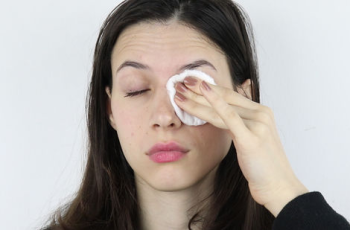
Can Niacinamide and Matrixyl be used together?
A new day, a new ingredient making waves in the skincare industry: Matrixyl is the new thing we all stand to benefit from. I can already hear the questions floating around in your head as you write this, but don’t worry, I’ll make everything clearer by the end of today’s blog post. Let’s start by explaining what Matrixyl is and how it works on the skin.
What is Matrixyl?
Matrixyl is the brand name for synthetically produced anti-aging peptides used in skincare products. You’ll find Matrixyl as a combination of Palmitoyl Tripeptide 1 and Palmitoyl Tetrapeptide 7. Both of these peptides are building blocks of the skin, helping to form structure and boost collagen production. This is important for maintaining the health and appearance of your complexion. Starting in your twenties, collagen levels begin to decline by 1% per year.
Matrixyl works in a clever way, stimulating the growth of elastin, collagen, and natural hyaluronic acid in the body. By working on the skin, it reduces the appearance of fine lines and wrinkles, making the complexion appear plumper, firmer, and more youthful.
Another great thing about Matrixyl is that anyone can use it. Your only concern might be making sure your skin is happy with the other ingredients it’s mixed with. One ingredient that won’t give you too much trouble is Niacinamide.
What is Niacinamide?
Niacinamide is a form of Vitamin B3 that offers results for almost all skin types, including sensitive skin. With its unique properties of attracting and binding moisture to the skin, it also regulates sebum production. This makes Niacinamide a very useful ingredient for those prone to acne as it hydrates and nourishes the skin, something that those who often break out miss out on due to overuse of harsh exfoliants and strong formulas.
If you want to know more about Niacinamide, you can read our dedicated blog post on Beauty Insiders.
Now that we’ve updated our knowledge on both active ingredients, let’s see if you can use Matrixyl and Niacinamide together.
What Not to Mix with Matrixyl?
While Matrixyl works well for the skin, there are also some precautions to keep in mind with other ingredients like Vitamin C (also known as L-ascorbic acid), BHAs like salicylic acid, and other acids like the popular AHA, glycolic acid.
It is believed that it is best to avoid using these ingredients together because if you mix them all together, it can lead to over-exfoliation. Since Matrixyl is considered safe enough for all skin types, it is important to remember that Matrixyl works on the skin in a similar way to retinol. By increasing skin cell turnover, the ingredient technically does not exfoliate, but then using an exfoliating formula on the skin can over-irritate the skin, throw the pH off balance, and cause rashes and redness.
Can Matrixyl and Hyaluronic Acid be used together?
Of course, you can use Matrixyl and Hyaluronic Acid together. Each active ingredient is very effective on its own, but they work even better when used in combination. Hyaluronic acid absorbs more than 1,500 times its weight in water and locks it in place while penetrating into the lower dermis. Combining it with Matrixyl boosts the production of collagen and hyaluronic acid in the skin, leaving your complexion hydrated. The combination of the two is particularly effective in the winter months to combat over-dryness. As an added bonus, both ingredients help regulate the skin’s sebum levels, preventing further breakouts.
Can I use Matrixyl and Retinol at the same time?
This is not true, that’s just because they both benefit the skin in similar ways. Stacking Matrixyl and Retinol can lead to side effects such as redness, peeling, itching, dryness and irritation. It is important to build up your skin’s tolerance by slowly introducing Retinol into your daily routine.
For best results without side effects, I recommend using each ingredient every other day so you can reap the benefits of the powerful active ingredients. Since both Matrixyl and Retinol promote skin cell turnover, it is especially important to wear SPF every day to protect your face from free radicals such as UV radiation, pollution, central heating and other environmental influences.
Can Matrixyl be used around the eyes?
Yes, you can! You will notice that the skin around your eyes is noticeably thinner than the rest of your skin. This often leads to signs of aging such as fine lines, wrinkles and eye bags in the eye area. By applying Matrixyl under your eyes, you can increase hydration, reduce the appearance of fine lines, and improve the appearance of eye bags that can look worse in the morning due to fluid retention or dehydration.
Can I mix Niacinamide with Peptides?
Yes, it is considered completely safe to mix Niacinamide and Peptides together. Using a mixture of these two powerful ingredients allows the skin’s lipid barrier to maintain proper levels of water and oil, ensuring it is strengthened and can protect the skin’s surface from harmful free radical damage. You can find more information about Niacinamide and Peptide mixtures in our blog post.
There you will get an in-depth look at the use of Niacinamide and Matrixyl together. Even if you already use these ingredients and have a good habit of using them, it is always a good idea to consult a doctor or dermatologist to ensure that you are using the ingredients that are best for you and your skin’s needs. If you still have any questions, you can find me on the Procoal Instagram account. I’d be happy to see you there.


